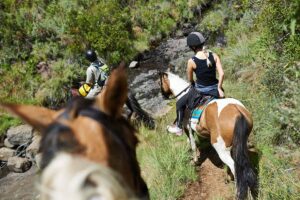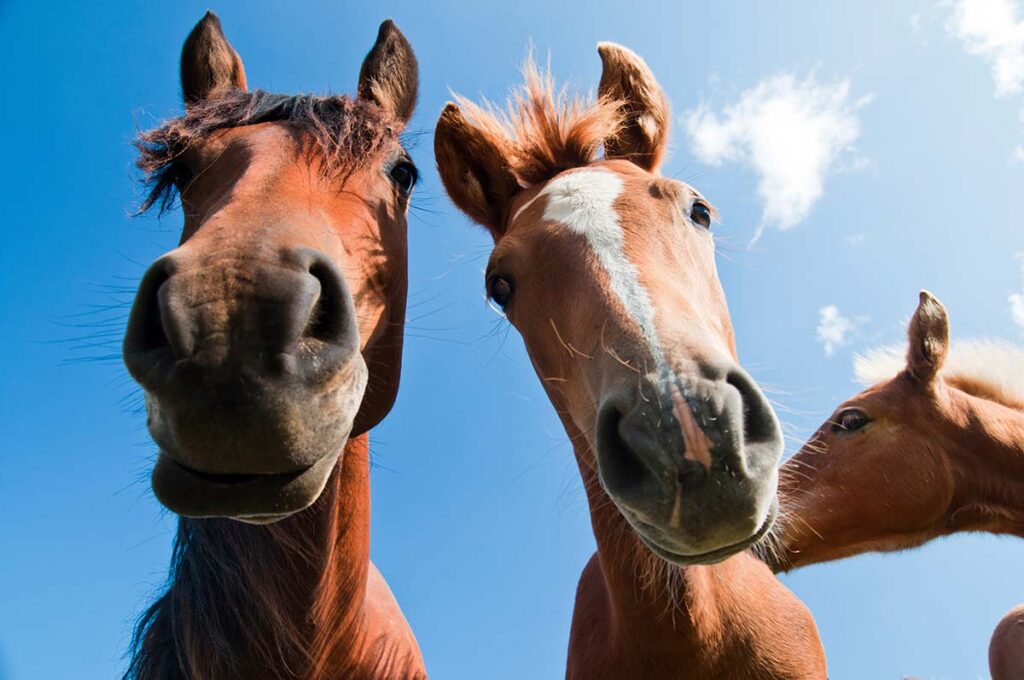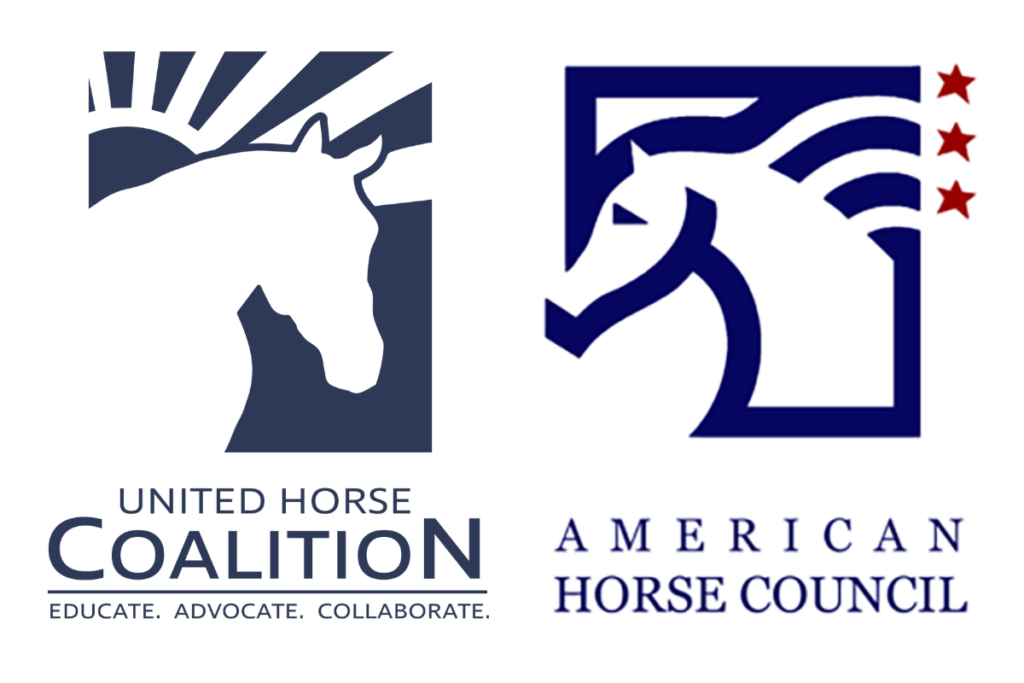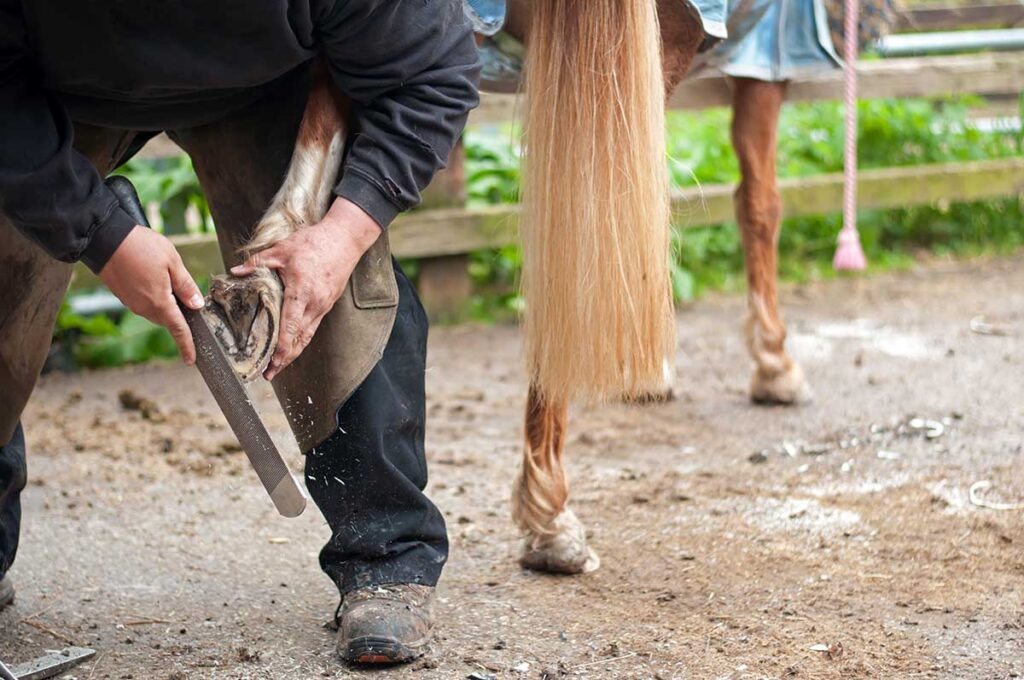Every month or two, an alert pops up on your calendar: It’s time to schedule your horse’s next farrier appointment. Whether for a barefoot trim or a full set of shoes, your horse requires professional hoof care every four to eight weeks. While barefoot is the more affordable and natural way to go, some horses need support in the form of horseshoes ranging from basic steel to glue-ons to therapeutic shoes.
In this article, we’ll discuss the pros and cons of shoeing versus going barefoot, so you and your farrier can make the best choice for your horse’s unique needs. After all, the decision can impact your horse’s soundness, comfort, and performance.
The Basics of Barefoot Horses
Horses’ hooves were designed to function without shoes, expanding and contracting naturally as they move. And when the bare foot contacts the ground, the footing that packs into it helps dissipate the energy of the impact while stimulating the sole and the frog. These mechanics help promote strong bones and hoof walls and provide a level of shock absorption.
Modern management, genetics, and exploits, however, have made it necessary to give many horses’ feet a little extra support. Those with sensitive feet, thin soles, or foot imbalances, for instance, might need the reinforcement and protection shoes can provide. Your farrier and veterinarian can help you assess whether your horse is a suitable candidate for going barefoot or if he needs a partial or full set of shoes.
The Pros and Cons of Shoeing

Shoes can provide beneficial protection and support for some horses, especially those in hard work or that travel on hard or rocky terrain. They can also help prevent injuries and accommodate certain foot shapes and conditions.
However, shoeing does have its downsides. Shoes restrict the natural expansion of the hoof, which can limit blood flow and reduce shock absorption. They also require regular maintenance and can be expensive.
Making the Decision

To decide whether your horse should be shod or barefoot, consult with your farrier and consider the following factors:
- Your horse’s workload: If your horse is a high-performance athlete, works frequently on hard terrain, or carries a heavy load, shoes might provide support and protection and help combat excessive wear.
- Your environment: Consider the terrain and weather conditions in which your horse spends most of his time. If you ride on rocky trails or live in a region with hard ground, shoes (or properly fitted hoof boots) might be necessary.
- Your horse’s hoof health: If your horse has healthy hooves, strong walls, and balanced foot conformation, they might be suitable for going barefoot. On the other hand, if your horse has chronic hoof issues, thin soles, or flat feet, shoes might be necessary, at least for the time being.
- Your horse’s comfort: Ultimately, you want to do what’s best for your horse’s soundness and well-being. If you’ve tried going barefoot and your horse seems uncomfortable—or if the opposite is true and shoes cause discomfort—work with your farrier to make adjustments.
The decision to shoe your horse is not black and white, and he might be more comfortable with or without shoes as his hoof health, integrity, and environment change. Some riders, for instance, shoe their horses only during seasons when they’re in full work and remove the shoes when the hooves are likely to endure less wear. This is where good communication with your veterinarian and farrier comes into play, as they can advise you on your horse’s current needs.
In Conclusion
Deciding whether to shoe or leave your horse barefoot can be a complex decision that requires careful consideration of several factors. The most important thing is to prioritize your horse’s health and comfort. By working with a trusted farrier and staying attentive to your horse’s needs, you can make the best choice for your equine companion.
Are you enjoying this content? Sign up for My New Horse’s FREE newsletter to get the latest horse owner info and fun facts delivered straight to your inbox!








